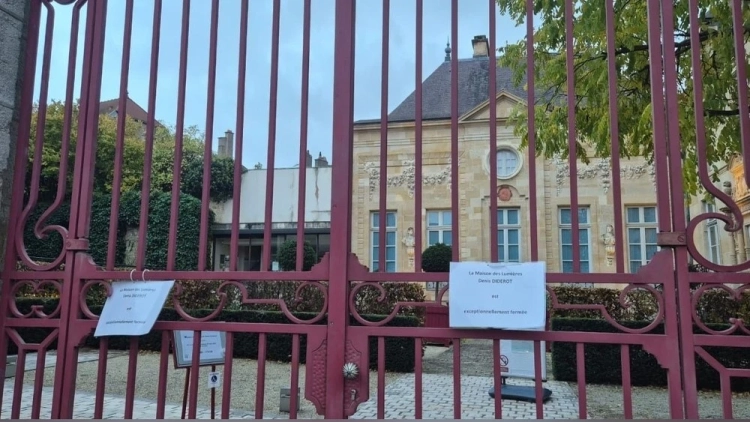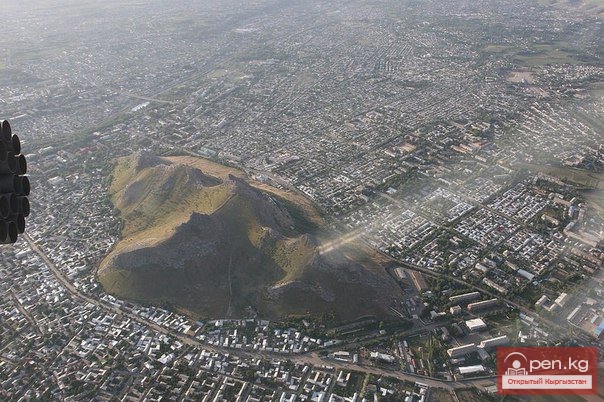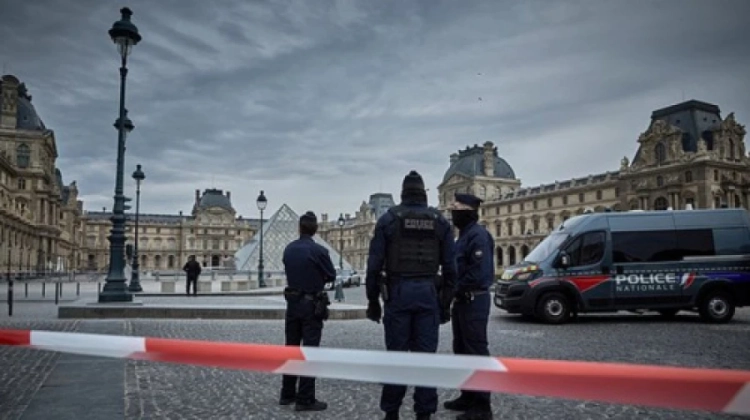
The State Historical Museum of the Kyrgyz Republic is one of the largest museums in Central Asia. It houses and preserves the finest monuments of the history and culture of the Kyrgyz people. The museum's rich collections form the basis of all its exhibitions, serve as a scientific foundation for researchers and scholars, and are used as illustrations in scientific and popular science literature. They have been exhibited multiple times in major museums in Moscow and St. Petersburg, as well as in France, Finland, Japan, and Turkey.
The State Historical Museum is the only museum whose collections can showcase the history of the Kyrgyz Republic from ancient times to the present day. It serves as the largest center for science, culture, and education.
Collections
The museum's funds comprise approximately 90,000 exhibits. These include archaeological and ethnographic artifacts, such as rock paintings, bronze and ceramic items, artistic works made of precious metals, national musical instruments, and traditional clothing, horse gear, and felt products.
History of Establishment
The museum was founded on December 9, 1925. It welcomed its first visitors on March 5, 1927. The exhibition was prepared for the opening of the 1st Constituent Congress of the Councils of Kyrgyzstan and was housed in one of the rooms of M.V. Frunze's parents' house. The establishment of the museum marked the beginning of systematic studies of the history and nature of the mountainous region and the broad promotion of local studies. The first director of the museum and the founder of the ethnographic department was the renowned ethnographer S.M. Abramzon.
Throughout its history, the museum has changed its name several times:
1925-1933 — Central Museum of Kyrgyzstan;
1933-1943 — State Museum of Local Lore;
1943-1954 — Museum of National Culture;
In 1954 — renamed to the State Historical Museum.
In the 1920s and 1930s, the main focus was on the collection of ethnographic and natural science collections. The creation of the historical and archaeological department is associated with the name of the Leningrad archaeologist A.N. Bernshtein. In 1941, under his leadership, the first scientific exhibition on the history of Kyrgyzstan from the 11th millennium BC to the early 20th century was opened. In 1947, the department of socialist construction began its work. The foundations of its exhibition were laid by museum staff in the 1940s and 1950s, now known scholars and historians: S.K. Kerimbaev, K.U. Usenbaev, K.I. Antipina, V.Ya. Galitsky. In 1967, the Historical Museum moved to a building constructed in 1927 according to the design of architect A.P. Zenkov for the Government of the Republic. The museum grew into a major scientific, cultural, and methodological center in the Republic. In 1991, the Historical Museum was transferred the building of the branch of the Central Museum of V.I. Lenin.

Historical Museum. 1930s

Historical Museum. 1950s

First government building. Museum since 1966

Historical Museum of Kyrgyzstan since 1991
Currently, the museum's collections number 90,000 items of museum significance, including 44,000 — monuments of the main fund. The pride of the Historical Museum lies in its archaeological and ethnographic collections, materials that tell about state building, development, and achievements in the fields of economy, science, and culture of Soviet and sovereign Kyrgyzstan. Many of these collections are unique and hold great scientific value and global significance. Among them are stones with rock paintings from the Saymaly-Tash area (early 1st millennium BC—5th century AD), items of weaponry and everyday life from storage and archaeological excavations of the Bronze Age, miniature sewn plaques made of gold foil, crafted in the Saka "animal style," and decorations of the polychrome style of early nomads (1st-5th centuries AD), including artistic works from the Shamsinsky burial in the Chui Valley.
The collection of ancient Turkic stone sculpture, Talas stones with runic inscriptions, items of weaponry, ceramics, glass, metal, and architectural decor from medieval cities—carvings on clay, polychrome paintings from the Ak-Chiy settlement in the Ketmentyubinskaya Valley, and numerous hoards of coins belong to the era of Turkic khanates (6th-12th centuries). The museum possesses rich ethnographic collections from the late 19th to the early 20th centuries and modern times. Among them are magnificent works made of felt, wool, chiy, leather, and wood, created by Kyrgyz artisans. There are collections of traditional Kyrgyz embroidery, pile and non-pile weaving, national clothing, unique women's jewelry, and highly artistic items of horse gear. Materials on the history of the Soviet period and modernity are of great interest: collections of documents, photographs, material sources, samples of products from industrial enterprises, a collection of paintings, graphics, sculpture, and gifts to the Kyrgyz Republic from foreign countries. The museum holds materials about outstanding people of the Republic, their personal belongings, documents, awards; there are collections of weapons, numismatics, and banknotes.
Ticket Prices

Exhibitions
“History of Kyrgyzstan from Ancient Times to the Early 20th Century.” Ancient and Medieval Archaeology of Kyrgyzstan
Content
1. STONE AGE
Paleolithic
Mesolithic
Neolithic
2. ENEOLITHIC
3. BRONZE AGE
Andronovo Culture
Chust Culture
4. EARLY IRON AGE
Saka Culture
Monuments of the Usun Period
Kenkol Culture
Karabulak Culture
Culture of Ancient Fergana
5. MIDDLE AGES
Ancient Turkic Culture
Early Medieval Urban Culture of Semirechye
Cult Structures of Semirechye in the Early Middle Ages
Culture of the Karakhanids
Open Storage Fund “Gold of Ancient Kyrgyzstan”
Each historical era has left its marks on our land in the form of monuments of history and culture. Among the rich and diverse archaeological collections of the State Historical Museum of the Kyrgyz Republic, its special pride is the collection of gold and silver artifacts that have come down to us from the depths of the ages. Most of them hold particular historical value and are considered monuments of world cultural heritage.
Items of ancient art made from precious metals provide insight into the historical development paths of the peoples who lived in the territory of the Eurasian steppes. Their rich culture later organically merged into the material culture of the modern Kyrgyz people, one of the oldest peoples of Central Asia.
Gold is one of the first metals discovered by humanity. The strength and beauty of gold, shining in the sunlight, its ability to remain unchanged under any conditions, led people to believe in the divine origin of this noble metal. Gold jewelry symbolized luxury and wealth, affirming the power of the social elite of ancient society.
The created open storage fund “Gold of Ancient Kyrgyzstan” presents the best examples of jewelry art from the Saka civilization, the era of the Great Migration of Peoples, and medieval Kyrgyzstan. These rarities amaze with their high artistic merits, beauty, and the skill of their creators.

Figure of a gazelle. Gold. Issyk-Kul, burial site of Tuur-Suu, 5th-4th centuries BC.
The earliest among them are monuments of decorative and applied art from Saka burial mounds of the 8th-3rd centuries BC, found during excavations of archaeological sites in the Ketmen-Tyubin basin and on the territory of the Inner Tien Shan. Rare monuments of gold and bronze torvets with zoomorphic imagery have entered history under the name of the Saka "animal style" and gained worldwide fame.
It is evident that the images of animals, beautifully conveyed by Saka masters, embodied such important concepts and qualities for the nomadic warriors as strength, bravery, swiftness, and these categories corresponded to the Saka's notion of beauty.
Alongside the unique works of the Saka tribes, significant interest is represented by gold jewelry of the polychrome style from the 3rd to 6th centuries AD. This remarkable art originated in the expanses of the Eurasian steppes when tribes from the eastern regions of Central Asia—the Huns (Xiongnu, Hunnu)—emerged on the historical stage, influencing all aspects of the social, political, and cultural life of the peoples of Eurasia. Among the unique monuments of this time is the collection of artistic items from the destroyed burial site of Shamsi in the Chui Valley, jewelry from the burial site of Jalpak-Dyobo in Alai, and original gold artifacts from the destroyed mound “Red Builder,” accidentally discovered on the northeastern outskirts of Bishkek.

Mask. Gold, carnelian. 20.4x15.3. Chui Valley. Burial site of Shamsi. 4th-early 6th centuries.
With the emergence and development of trade along the Great Silk Road, monuments of Buddhist culture and Christian religions appeared on the territory of modern Kyrgyzstan.
The flourishing of Buddhist culture and the construction of temples dates back to the 7th-8th centuries. In the Chui Valley, at the settlements of Ak-Beshim, Krasnaya Rechka, Novopokrovskoye, Sokuluk, Novopavlovskoye, objects of Buddhist worship have been recorded. The State Historical Museum of the Kyrgyz Republic houses a unique collection of medieval cult art, the best of which are sculptural bronze figurines of deities from the Buddhist pantheon and filigree bronze plaques covered with gold.
The appearance of Mongolian tribes in Central Asia in the 13th century significantly changed the economic and cultural development of the peoples of this historical and cultural region. Starting from this period, the unique culture of the Kyrgyz people began to develop, incorporating the best achievements of the material and spiritual culture of the ancient peoples who lived in the territory of modern Kyrgyzstan.
Legal Address: Bishkek, Ala-Too Square














































